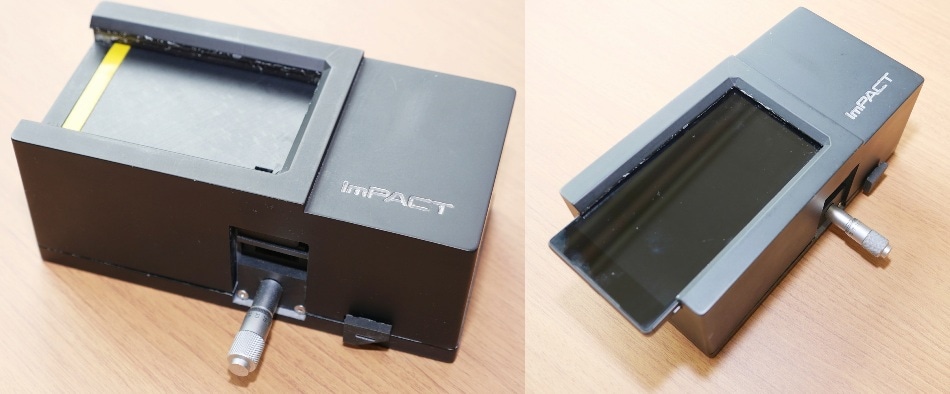Jul 31 2019
The present-day leading method to measure the presence of viruses and other biological markers of disease is effective but costly and large.
 The device without a smartphone (left) and with a smartphone attached (right). (Image credit: © 2019 Rohan Mehra - Division for Strategic Public Relations)
The device without a smartphone (left) and with a smartphone attached (right). (Image credit: © 2019 Rohan Mehra - Division for Strategic Public Relations)
It is too difficult for use in a number of situations, especially because of certain geographic and economic factors. Therefore, scientists developed and tested an alternative miniaturized system that makes use of inexpensive components and a smartphone. Scientists are optimistic that the system could help those who work to prevent the spread of diseases.
A virus scanner for a smartphone might not be very appealing initially, but this virus scanner does not search for the most recent malware; it scans biological samples to detect real viruses. It is a portable, cost-effective, battery-powered device and is the invention of researcher Yoshihiro Minagawa from the University of Tokyo. It was tested with viruses but could also sense other biological markers.
“I wanted to produce a useful tool for inaccessible or less-affluent communities that can help in the fight against diseases such as influenza,” said Minagawa. “Diagnosis is a critical factor of disease prevention. Our device paves the way for better access to essential diagnostic tools.”
Current high-tech tools for detecting and counting viruses and other biomarkers like fluorescence microscopes are usually slow, large, costly, and not user-friendly. Although very accurate at counting viruses, these tools are very bulky for many situations, particularly when quick diagnosis is needed.
Given two equal samples containing influenza, our system detected about 60 percent of the number of viruses as the fluorescence microscope. But it’s much faster at doing so and more than adequate to produce good estimates for accurate diagnoses. What’s really amazing is that our device is about 100 times more sensitive than a commercial rapid influenza test kit, and it’s not just limited to that kind of virus.
Yoshihiro Minagawa, Researcher, University of Tokyo
The device is roughly the size of a brick with a slot on top wherein users place a smartphone such that its camera looks via a small lens to the inner side of the device. On the screen through a customized smartphone app, users would see what may superficially look like a starry night sky, except those stars would actually be individual viruses.
Viruses stay in place on a clear surface in minute cavities lit with an LED. The surface and fluid surrounding it were engineered so that only when a cavity contains a virus inside does incident light—the light that instantly hits the surface—from the LED redirect up to the camera, displaying in a bright pixel in an otherwise dark void. Each cavity is 48 femtoliters (quadrillionths of a liter)—it would require more than 10 million of these to hold a single human tear.
This is now possible because smartphones and their embedded cameras have become sufficiently advanced and more affordable. I now hope to bring this technology to those who need it the most. We also wish to add other biomarkers such as nucleic acids—like DNA—to the options of things the device can detect. This way we can maximize its usefulness to those on the front line of disease prevention, helping to save lives.
Yoshihiro Minagawa, Researcher, University of Tokyo